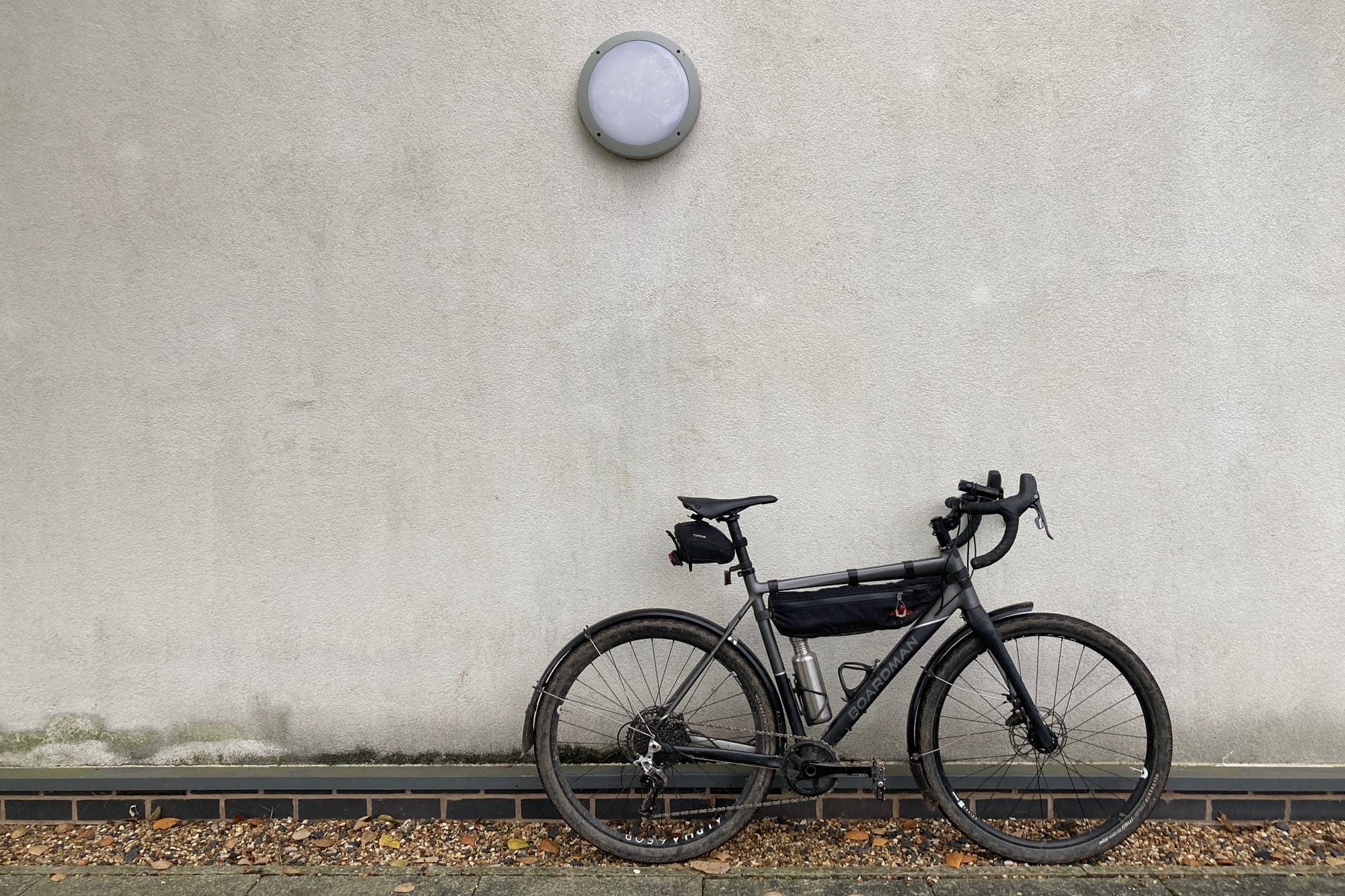Sciatica, cycling and me
An injury taught me some tough lessons about myself and what it means to be well.

One afternoon without warning I felt pain shooting down the back of my left leg. It was like an intense, burning cramp. I didn't know it at the time, but this was sciatica – a symptom of a herniated disc in my back. For a week I struggled to do anything other than lie down. Sitting was agony, walking extremely painful.
The GP prescribed some strong painkillers over the phone. After a while I made it to the physio. He confirmed my diagnosis and told me it would be something I'd always have to live with, one way or another. It wasn't the news I wanted to hear. This was the winter of 2020. The country was just going into a second Covid lockdown and I relied on cycling and walking to maintain my sanity.
Cycling was out of the question (I couldn't even mount a bike) but walking wouldn't make it worse, the physio said. So that's what I did. Each day my routine consisted of working at a makeshift standing desk, doing my stretching exercises as well as I could manage and then going for a walk. I'd take forlorn wanders, limping around the bare local hills and muddy woods, hoping I could somehow walk myself well.
These 'sciatica strolls' are logged in my Strava account. Scrolling through them today I feel a deep sorrow for my former self. Hang in there, I want to say. You will move without pain again. You will get back on your bike. I know that's not how I felt at the time. When G would come home from primary school and want to ride his bike, I'd hobble along the street and watch him trace circuits up and down the cul-de-sac, waving to him as he passed. It was both heartwarming and heartbreaking.
Then, in the midst of my darkness, I came across Wintering by Katherine May, a book about 'the power of rest and retreat in difficult times'. I realised that I was wintering, that this was a fallow period in my life and there was nothing I could do to change that. As Katherine writes:
Life meanders like a path through the woods. We have seasons when we flourish and seasons when the leaves fall from us, revealing our bare bones. Given time, they grow again.
Months passed, the seasons changed and lockdown ended. Gradually time and the stretching exercises had an effect. When gentle cycling became possible, I sought out a bike fit to ensure my riding position was as comfortable as it could be. My bike fitter had also suffered from sciatica, but was now back to riding long distances through the summer and snowboarding in the winter. He adjusted my bike and told me he was confident I'd be fine.
He was far from the only sciatica sufferer I came across. It seemed I'd unwittingly joined a community of people who live with this injury. I've met many more since. For some, sciatica returns periodically to derail their plans. Some experience shooting pain, others more of a numbness. Sciatica, it seems, has many guises. My injury has diminished to the point where an occasional twinge serves as a reminder that recovery is not a goal but a practice – something that must be part of my daily life.
Nearly five years on from that first painful winter, I'm happy with the person that an enforced period of rest and reflection has made me – someone who practises recovery and prioritises their wellbeing. When I ride, I'm grateful for every turn of the pedals. I'm more comfortable than ever on my bike, but I also swim and stretch and sometimes run. I keep my body moving, ever mindful of that winter afternoon when it ceased working and seized up so painfully.
If you suffer from sciatica, I can't pretend to know what will work for you or how you should navigate through the tough times. But I do know that you're not alone.

